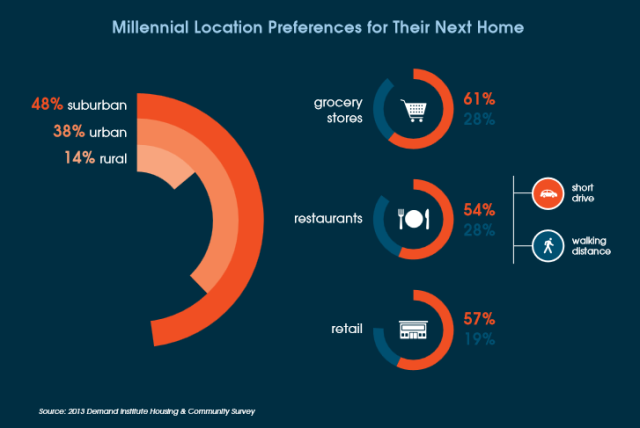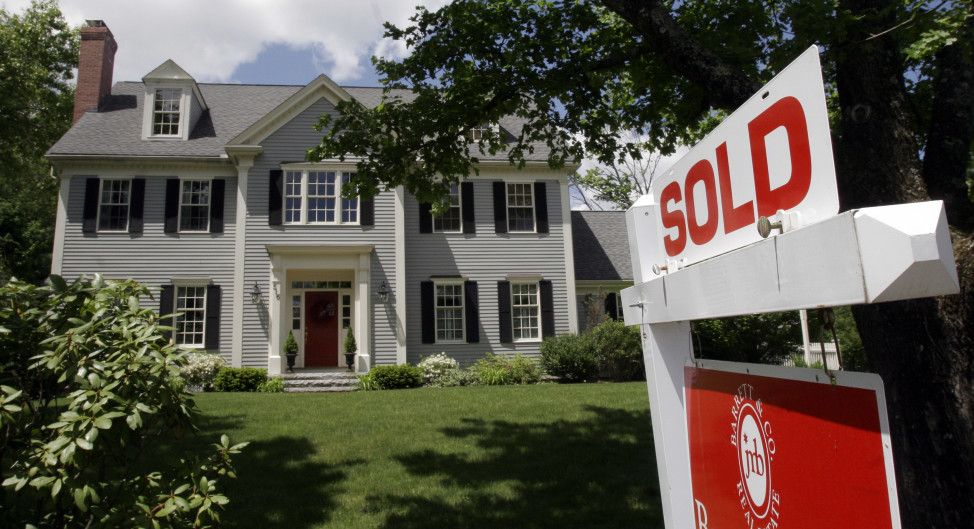Millennials have a reputation for loving social media and big city living, but the truth is their idea of the American Dream looks a lot like their parents’ did.
There are 77 million Americans between the ages of 18 and 36, and they account for 24 percent of the U.S. population. These so-called Millennials–who like being close to shops, restaurants and offices–currently live in urban areas at a higher rate than any other generation, according to Nielson.
But is that because they love city life? Some demography experts have suggested the reason there are so many Millennials in urban areas is because they haven’t been able to save enough money that would allow them to leave and possibly purchase a home elsewhere.
 Most Millennials are single. However, when it comes to their future, the majority of young Americans (64%) expect to marry and have kids (55%) in the next five years.
Most Millennials are single. However, when it comes to their future, the majority of young Americans (64%) expect to marry and have kids (55%) in the next five years.
And when they do, according to a recent study by the Demand Institute, they’ll be heading to the suburbs.
Forty-eight percent of Millennials surveyed say they expect to move to these outlying areas, which are usually separate residential communities within commuting distance of a city.
More than one-third of those surveyed expect to purchase a single family home and most of them want more space.
And while Millennials generally love being within walking distance to shops and restaurants, those who are eyeing suburban life say they don’t mind being a short drive away from grocery stores, eateries and stores.
While all this suggests suburbs are going to remain an important part of the American landscape, the look of these outlying areas is likely to change to suit Millennial tastes. Communities that combine the best of city living–such as convenience and walkability–with the best of suburban living–good schools and more space–could be the ones to flourish in the future.























In 2000 I had been driving to an office building to work every day for many years. I knew I could do the same job from home, but it took some searching until I found what I wanted. For the next five years I worked from home and did exactly the same thing I had been doing but I didn’t have to drive to work every day. I now have a good bicycle with saddlebag baskets that gets me to the local stores and if I must go further I can take my bicycle on the local buses. We have an excellent bus system. I recently retired and began drawing social security retirement benefits. I own a single family home in the middle of a large city. My only regret is that I didn’t get a work from home job 20 years earlier.
They don’t dream to go to suburbs. They want to leave in cities if they can afford it. And as you know, the trend is that many young Americans don’t even want to have a car and they want to live close to everything, that is why they move to cities. Living in suburbs is no fun, and you still experience noise and traffic
If you have children and want a house larger than 1,000 square feet (which is tiny when you have children), if you live in a city of any size you are going to have to pay upwards of $500K for it. And then you still may be in a bad school district. So unless you are extremely rich or don’t mind sending your child to a bad school while living in a shoebox of a home, you move to the suburbs.